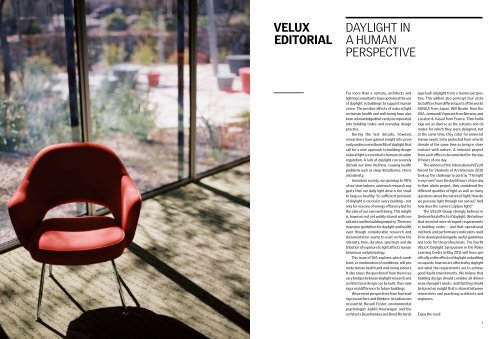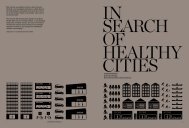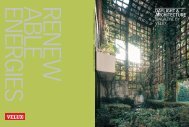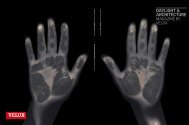Download as PDF - Daylight & Architecture - Magazine by | VELUX
Download as PDF - Daylight & Architecture - Magazine by | VELUX
Download as PDF - Daylight & Architecture - Magazine by | VELUX
Create successful ePaper yourself
Turn your PDF publications into a flip-book with our unique Google optimized e-Paper software.
<strong>VELUX</strong>EDITORIAL<strong>Daylight</strong> ina humanperspectiveFor more than a century, architects andlighting consultants have optimised the useof daylight in buildings to support humanvision. The positive effects of natural lighton human health and well-being have alsobeen acknowledged but rarely incorporatedinto building codes and everyday designpractice.During the l<strong>as</strong>t decade, however,researchers have gained insight into previouslyundiscovered benefits of daylight thatcall for a new approach to building design:natural light is essential to human circadianregulation. A lack of daylight can severelydisturb our time rhythms, causing healthproblems such <strong>as</strong> sleep disturbance, stressand obesity.In modern society, we spend up to 90%of our time indoors, and much research suggeststhat our daily light dose is too smallto keep us healthy. So sufficient provisionof daylight is crucial in every building – notonly for re<strong>as</strong>ons of energy efficiency but forthe sake of our own well-being. This insightis, however, not yet widely shared with consultantsand the building industry. There areno proper guidelines for daylight and health,even though considerable research anddocumentation seems to exist on how theintensity, time, duration, spectrum and distributionof exposure to light affects humanbehaviour and physiology.This issue of D/A explores which conditions,or combination of conditions, will promotehuman health and well-being indoors.It also raises the question of how the necessarybridges between daylight research andarchitectural design can be built, thus makinga real difference to future buildings.We present perspectives from four leadingresearchers and thinkers: circadian neuroscientistRussell Foster, environmentalpsychologist Judith Heerwagen and thearchitects Dean Hawkes and Brent Richardsapproach daylight from a human perspective.This edition also portrays four architectoffices from different parts of the world:SANAA from Japan, Will Bruder from theUSA, Jarmund/Vigsnaes from Norway, andLacaton & V<strong>as</strong>sal from France. Their buildingsare <strong>as</strong> diverse <strong>as</strong> the cultures and climatesfor which they were designed, butat the same time, they cater for universalhuman needs; to be protected from a harshclimate at the same time <strong>as</strong> being in closecontact with nature. A selected projectfrom each office is documented for the daylithours of one day.The winners of the International <strong>VELUX</strong>Award for Students of <strong>Architecture</strong> 2010took up the challenge to portray “The lightin my room” over the daylit hours of one day.In their photo project, they considered thedifferent qualities of light <strong>as</strong> well <strong>as</strong> manyquestions about the nature of light: How dowe perceive light through our senses? Andhow does the camera capture light?The <strong>VELUX</strong> Group strongly believes inthe beneficial effects of daylight. We believethat we need more stringent requirementsin building codes – and that operationalmethods and performance indicators needto be developed alongside useful guidelinesand tools for the professionals. The fourth<strong>VELUX</strong> <strong>Daylight</strong> Symposium in the RolexLearning Centre in May 2011 will focus specificallyon the effects of daylight on buildingoccupants, how we are affected <strong>by</strong> daylightand what the requirements are to achievegood daylit environments. We believe thatbuilding design should consider all dimensionsof people’s needs – and that they shouldbe b<strong>as</strong>ed on insight that is shared betweenresearchers and practising architects andengineers.Enjoy the read!1










